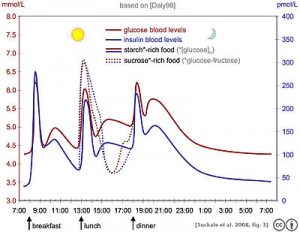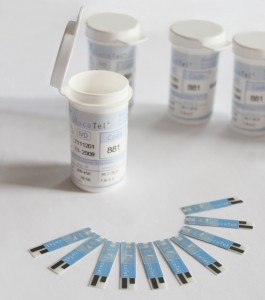The Dangers of Extremely High Blood Sugar Levels
There are many dangers of having an extremely high blood sugar level. When the insulin levels are low the glucose skyrockets, which can permanently damage the body. The damage that the body can sustain includes heart damage and the increased chance of getting:
- heart disease
- nerve damage
- blindness and
- kidney damage

If your blood glucose levels remain too low, or too high, for a long period of time, this can cause what is called a diabetic coma.
So what happens when a person goes into a Diabetic Coma?
It is a life-threatening complication of diabetes that causes unconsciousness – if you don’t seek medical help immediately, this can be fatal. All people with diabetes are at risk of diabetic coma. The very first this you would do if faced with this situation is to call 911. This is an emergency situation.
Treatment for a diabetic coma
Hyperglycemic diabetic coma: Which is if you have extremely high blood sugar levels, the medical professional will administer insulin and rehydrate the patient.
Hypoglycemic diabetic coma: The patient would be injected with glucagon and give glucose.
How to Care for Extremely High Blood Sugar.
Monitoring your blood glucose levels constantly: helps diabetics to avoid the complications that can arise. This is done with a blood glucose meter. There are many different kinds of meters to choose from. Many of the meters available today are quite small and easy to use.
Most of the meters available have fast test times, only really require a tiny blood sample and you are able to download the results to keep good records of your levels.
Here’s some of the popular, portable and preferred pocket-sized meters you may want to look into:
- Lifescan One Touch Ultraeasy
- Abbott Diabetes Care Freestyle
- Accu-Chek Mobile
- Accu-Chek Aviva Nano
- Truone by Home Diagnostics
- Bayer’s contour Next USB
Diets can easily help with your extremely high blood sugar.
The correct diet for diabetes, will certainly help to lower your high blood glucose levels and maintain them. The foods you choose to eat can be so important to your overall health and wellbeing. What you eat can make an enormous difference to your blood sugar levels, to your cholesterol and also your blood pressure levels.
These days we are advised by our diabetes health care professionals to focus more on creating healthy eating patterns, lower in saturated fats and higher in fiber, and our overall weight control.
High Fiber Foods:
High fiber foods are beneficial as they have a low glycemic index. They regulate blood sugar metabolism and improve the health of the digestive system. A fiber-rich diet is generally lower in fat and sugar and makes you feel “fuller” for longer! You can find soluble fibers in oat bran, barley, fruits, vegetables, legumes, seed husks and flaxseed.
Plant Foods:
All fresh, whole, unprocessed plant foods are beneficial. Below are a few of these listed, that have been shown to improve blood sugar management.
- Green tea
- coffee
- cocoa
- black rice
- Pumpkin, beans, eggplant
- Blueberries, black currants, raspberries and strawberries
Protein Foods:
Animal proteins that contain very little carbohydrates will reduce the glycemic index of foods they are eaten with and help to stabilize your blood sugar levels. Lamb is a great option. Free range preferably organic chicken is a good source of protein – but the best you could probably get would be fish! Make sure it’s wild fish though, as fish farming is becoming an increasing problem with all the chemicals and the antibiotics used in the farming processes.
Exercise is Vital for Extremely High Blood sugar
I’m sure we could probably all gain from a few lifestyle changes – one of the main one being exercise! Some of these changes can certainly be challenging, but if you have diabetes, you really do need to make them a priority in your life. It’s no secret that losing those extra kilos and keeping them off, will definitely help to control your blood sugar levels. Apart form losing weight, regular exercise also increases insulin sensitivity. It’s recommended that a diabetic perform at least two and a half hours of medium to vigorous intensity exercise in a week. some examples would be fast walking, swimming, jogging, water aerobics.
So talk to your doctor about lowering your dangerously high blood sugar levels!.





 Blood tests vary depending on when blood is taken. The fasting blood sugar test is done after going eight hours without eating or drinking anything except water.
Blood tests vary depending on when blood is taken. The fasting blood sugar test is done after going eight hours without eating or drinking anything except water.
 However, a diabetic’s glucose level will always rise right after eating. A child with diabetes may have a blood glucose level of up to 10 mmol/L. Those who have type two diabetes may have a glucose level ranging from 4 to 9 mmol/L while those with type one diabetes should never have a blood glucose level of over 8.5 mmol/L.
However, a diabetic’s glucose level will always rise right after eating. A child with diabetes may have a blood glucose level of up to 10 mmol/L. Those who have type two diabetes may have a glucose level ranging from 4 to 9 mmol/L while those with type one diabetes should never have a blood glucose level of over 8.5 mmol/L.
